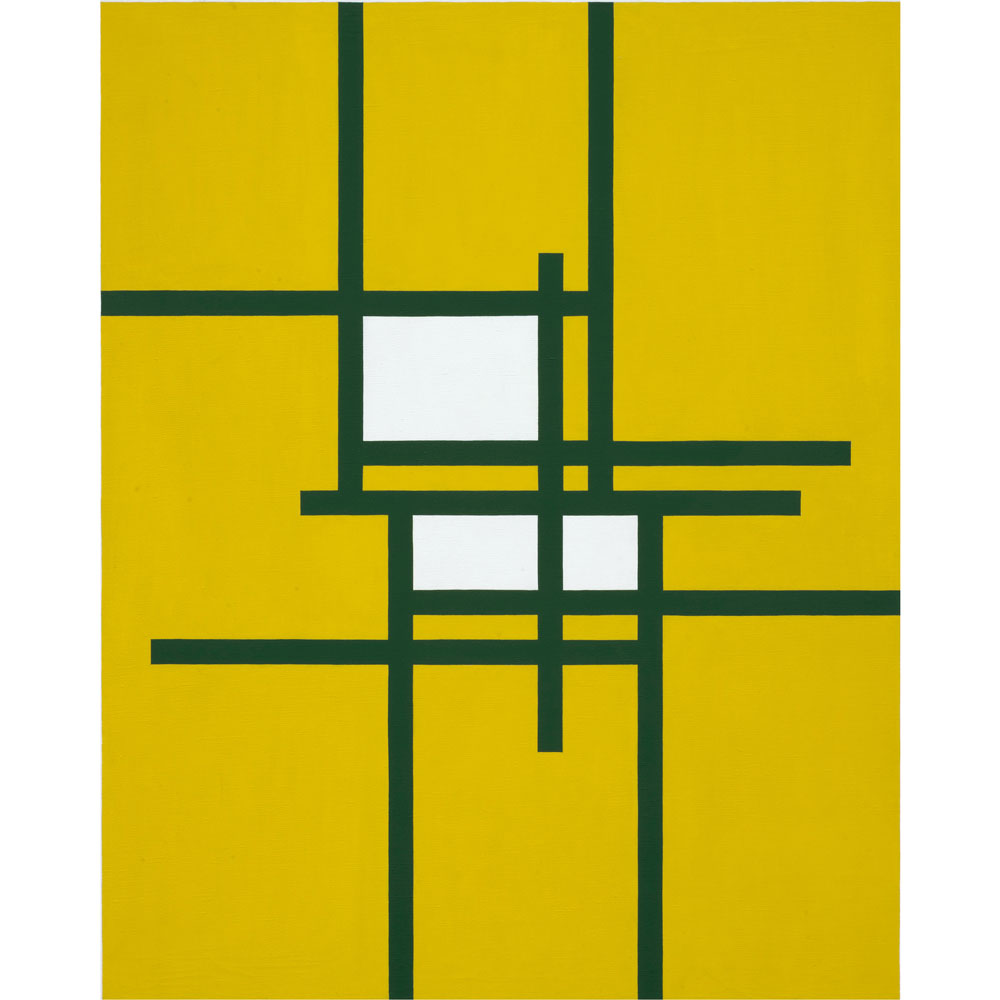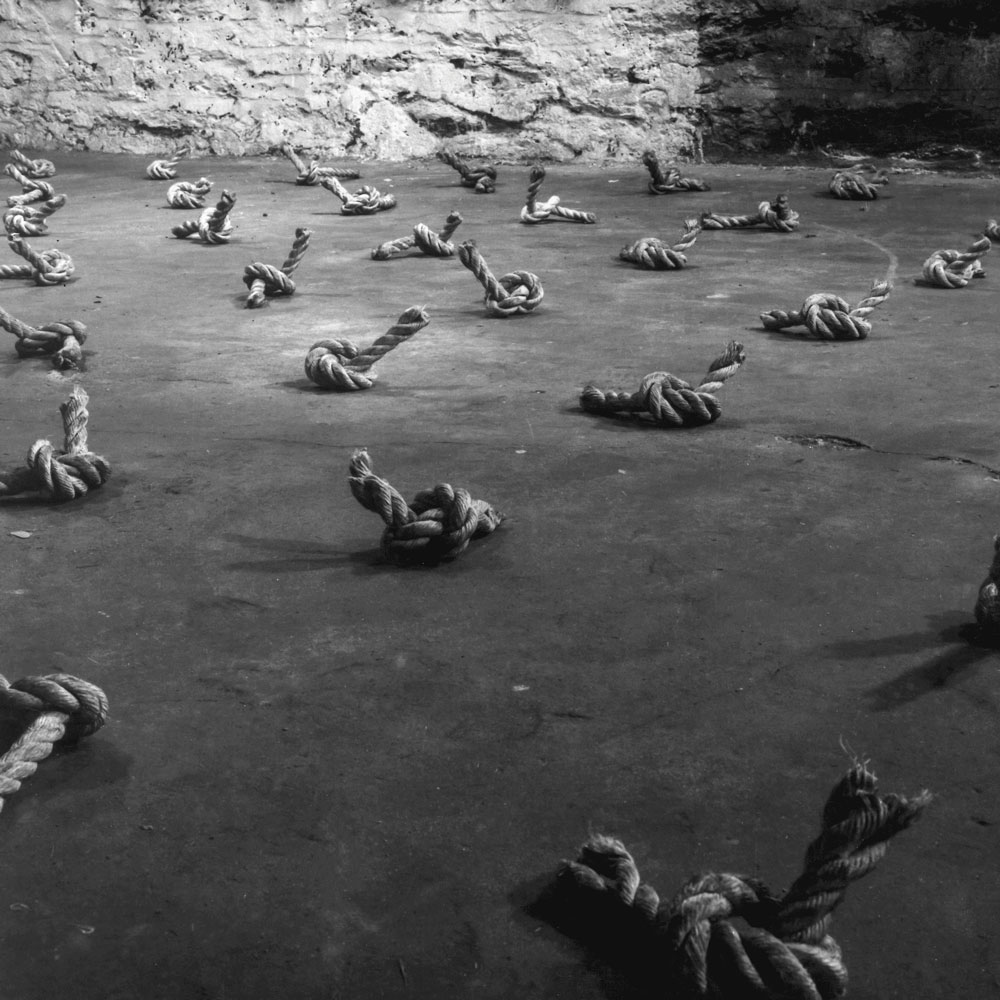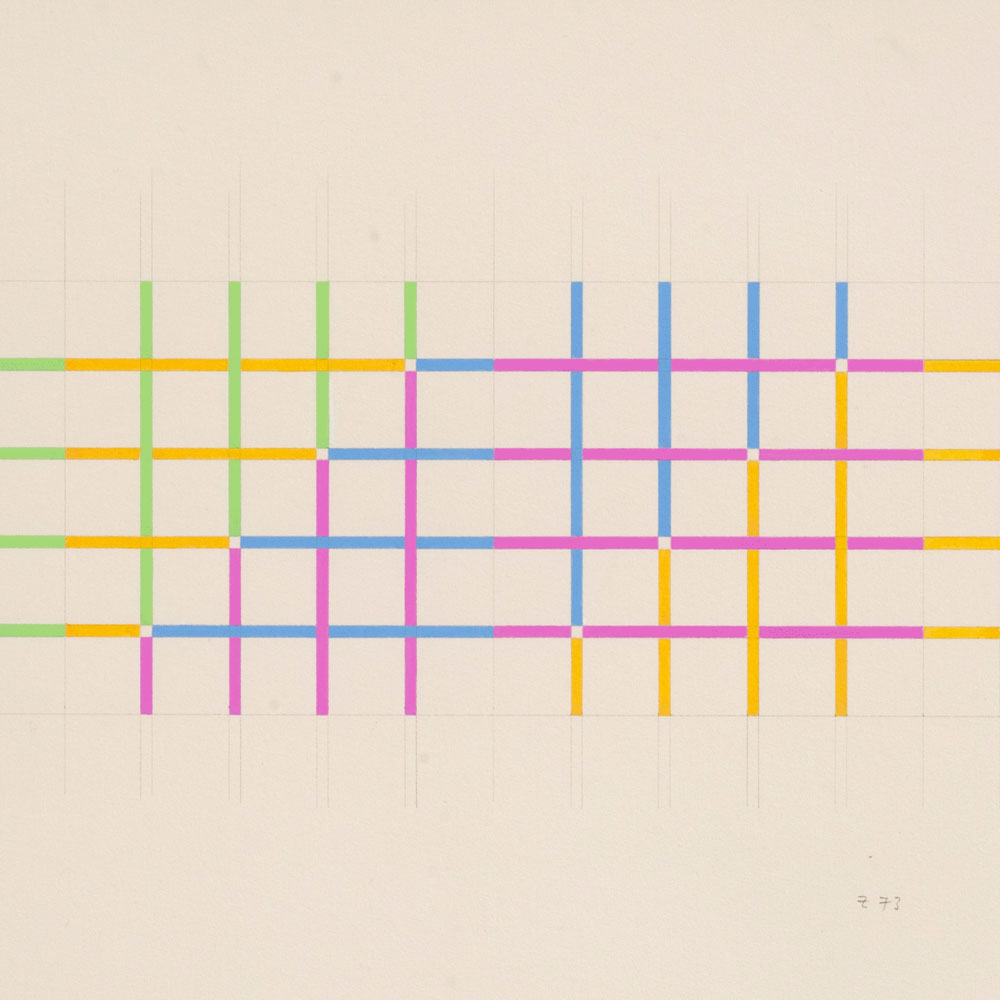ART-PREVIEW: Female Minimal-Abstraction in the Expanded Field
 The exhibition “Female Minimal: Abstraction in the Expanded Field” brings together pioneering female artists from Europe and the Americas who each contributed in their original and uncompromising way to expanding the scope of the minimal aesthetic beyond the orthodox category of Minimal Art. The personal trajectories of the artists presented demonstrate how varied backgrounds and experiences have been a consistent driver of innovation and creativity, while for many of the artists on display, gender inequalities and local politics were equally responsible for their omission from the canon of art history.
The exhibition “Female Minimal: Abstraction in the Expanded Field” brings together pioneering female artists from Europe and the Americas who each contributed in their original and uncompromising way to expanding the scope of the minimal aesthetic beyond the orthodox category of Minimal Art. The personal trajectories of the artists presented demonstrate how varied backgrounds and experiences have been a consistent driver of innovation and creativity, while for many of the artists on display, gender inequalities and local politics were equally responsible for their omission from the canon of art history.
By Dimitris Lempesis
Photo: Galerie Thadaeus Ropac Archive
Through a large selection of sculptures, paintings and works on paper dating from the 1920s to the early 1980s, the exhibition “Female Minimal: Abstraction in the Expanded Field” spotlights these artists’ centrality amongst period-defining artists’ groups such as Zurich Concrete in Switzerland, Abstraction-Création in Paris and Los Diez Pintores Concretos in Cuba, while for many of the artists on display, gender inequalities and local politics were equally responsible for their omission from the canon of art history. The history of geometric abstraction is also a history of global turmoil, migration, transnational exchange and shared values. The upcoming exhibition will explore new perspectives and genealogies in the field of geometric abstraction, highlighting the complex and often subtle relationships between formalism and identity politics and expresses the emancipatory desire to disrupt and expand the canon forged by the male-dominated avant-garde movements.
Finding early inspiration in experimental dance and choreography while a student at the Pratt Institute, Brooklyn, and in subsequent collaborations with Minimal dancer Yvonne Rainer in the 1960s, Rosemarie Castoro’s work throughout her life exhibited a distinctly performative character and understanding of space and movement. From 1964 onwards, Castoro created systematic works exploring colour and structural compositions in highly innovative experimentations, like her Y-Unit Interference and Inventory paintings and drawings. In 1968 – a time of political unrest in the USA – Castoro abandoned colour and started to engage with Concept Art, Street Works, Concrete Poetry and Post-Minimal sculpture. From the 1970s until the last years of her life, Castoro focused on sculptural experimentation. She introduced surreal and sexual allusions into the rational and mathematical frame of Minimalism, her work’s organic shapes presenting a parallel to the experimentation of Eva Hesse and Louise Bourgeois. Maria Lai was one of the most singular voices in Italian art from World War II on. Her special talent for drawing led her in 1939 to enroll in the Accademia di Belle Arti in Venice, the only woman in those years to study sculpture under Arturo Martini. In the fifties she moved to Rome, where she was able to observe various contemporary artistic developments, first through contacts with Art Informel and then, in the next decade, with the emergence of Arte Povera and Conceptual Art. From these movements she derived an interest in materials, both organic and those related to pre-industrial civilization, and in gesture as process, filtering these interests through an absolutely individual sensibility. Liliane Lijn is an American-born artist who was the first woman artist to work with kinetic text (Poem Machines), exploring both light and text as early as 1962; and in addition, she is in all likelihood the first woman artist to have exhibited a work incorporating an electric motor. She has lived in London since 1966. Utilising highly original combinations of industrial materials and artistic processes, Lijn is recognised for pioneering the interaction of art, science, technology, eastern philosophy and female mythology. Lijn is particularly known for her timeless, coneshaped Koan series. Verena Loewensberg, began her studies at the Basel trade school in 1927 where she was introduced to design and colour theory, then went on to a weaver apprenticeship as well as training in dance and choreopgraphy; the echoes of all these disciplines can be found in her work as an artist. Between 1934 and 1936 Loewensberg visited Paris several times often accompanied by Max Bill and who introduced her to the artists of the group “Abstraction-Création”; Hans Arp, Sophie Taeuber-Arp and Theo van Doesburg, as well as Georges Vantongerloo who had a lasting effect on her work. As of 1936 she belonged to the Swiss avant-garde, while after the war she became known as the only female artist of the small circle of the Zurich Concrete. Although her work is fundamentally constructive in nature, it was also imbued with great freedom, poetry and musicality. Loewensberg worked with visual elements that seem contradictory: her work contains circular shapes, cloud forms, irregular pentagons and sharp and obtuse angles, as well as colours that the strict constructivists who only worked in primary colours would deem unacceptable. Obsessed with visual problems, she solved them with a clear and precise attitude, suppressing any handwritten trace on the canvas.Mary Miss received a B.A. in art in 1966 from the University of California, Santa Barbara, and an M.F.A. in 1968 from the Maryland Institute College of Art, where she studied sculpture. She is a pioneer of the land-art movement along with Nancy Holt, Athena Tacha, and Alice Aycock. She created her first temporary site-specific installations in the 1960s, later producing permanent works such as the environmental artwork “Greenwood Pond: Double Site” in Des Moines, Iowa. Miss’s works are interdisciplinary, often informed by the history and ecology of their settings, and include elements of architecture, sculpture, landscape design, and installation art. In 2009 Miss launched the “City as Living Laboratory (CaLL)” an initiative that encourages artists to collaborate with scientists, planners and other experts to create place-based artworks that engage the public with the environment and issues of sustainability. Lucia Moholy, was one of the most prolific photographers at the Bauhaus between 1923 and 1928 and publications editor. Her photos documented the architecture and products of the Bauhaus, and introduced their ideas to a post-World War II audience. However Moholy was seldom credited for her work, which was often attributed to her husband László Moholy-Nagy or to Walter Gropius. Vera Molnar is one of the first women artists to use computers in her practice. Trained as a traditional artist, she studied art history and aesthetics at the Budapest College of Fine Arts and moved to Paris in 1947, where she still lives.She co-founded several pioneering artist research groups such as G.R.A.V. (Groupe de Recherche d’Art Visuel), which investigate collaborative approaches to mechanical and kinetic art, and the research group for art and computer science at the Institute of Art and Science in Paris.Pre-dating the computer, she invented algorithms or “machine imaginaire” that allowed the creation of image series following a set of pre-ordained compositional rules. Beginning in 1968, the computer became a central device in the making of her paintings and drawings, allowing her to more comprehensively investigate endless variations in geometric shape and line.Marlow Moss was a master of constructivist art, yet few today know her name. That could be because Moss was more than just a constructivist; she was a female, lesbian, British constructivist in a time when those four words were almost never used together in a sentence. Despite public ignorance, however, Moss was radical in her aesthetic experimentation, and secure in her own genius, evidently caring little or nothing about wealth and fame. She walked proud through a life she carved out for herself, giving no power to anyone who doubted or rejected her worth. Even today such a figure would likely be controversial in the art field, so it is no surprise, really, that Moss was nearly forgotten by history. Moss was friends with Piet Mondrian, and their influence ran both directions. She was also a founding member of Abstraction-Création, a group of abstract artists that formed in Paris in the 1930s to oppose the rise of Surrealism. She was also one of the most innovative artists living in St. Ives when the area was a hotbed of abstract innovation. Yet until relatively recently, her name was rarely uttered and her work was almost completely unknown by the public. Moss has recently enjoyed a revival, however.In the 1970s, influenced by the new art movements in Japan and North America, Lydia Okumura initiated the first Conceptual Art show in Brazil with fellow students at the SESC Vila Nova in São Paulo. As part of the collective Equipe3, along with Genilson Soares and Francisco Iñarra, Okumura was invited to participate in the 1973 São Paulo Biennial, for which they created a site-specific abstract environment, “Points of View”. This formative early installation was a precursor to Okumura’s sustained investigation of the intersections between two- and three-dimensional space, creating precise geometric illusions through modest interventions. Okumura moved to New York in 1974, where she attended the Pratt Graphics Center and collaborated on Sol LeWitt’s Minimalist wall drawings, to which her own works have been compared. Okumura creates her “Situations” by painting directly on walls, connecting geometric shapes with pieces of string and drawn graphite lines that result in deceptively simple optical illusions. Ana Sacerdote was given her degree in the Prilidiano Pueyrredon School of Fine Arts. In 1955 she painted her first abstract oil painting, Study of equilibrium. Influenced by Malevich and Moholy-Nagy, as well as works from the 1940s by concrete Argentine artists. After studying painting and photography in Paris in 1959, she created “Essai de Couleur Animee” while she was in Cuba, using a 16mm Paillard Bolex camera and a complex assembly and filming system designed and built by her. To do this, she painted and then filmed each animation frame from the first section called Monochrome. Her work was inspired by the pioneering works from Hans Richter, Viking Eggeling, and Norman McLaren. Between approximately 1961 and 1962 she painted her series of free geometric watercolors and participated in the Salão National Modern Art Museum in Rio de Janeiro. A main player in Cuba’s “Geometric Revolution. A lover of Geometric composition, Lolò Soldvilla studied in Paris, like many artists of her generation. The artist worked in various mediums including sculpture, bas-reliefs and paper. She often experimented with diverse sculptural mediums including plaster, stone and bronze—in addition to painting. She was founder of Cuba’s Galeria de Arte Color-Luz, a short-lived but fundamental venue for the exhibition of “Concrete Art” in the late 1950s and early 1960s. A member of a ‘The Concrete Ten’ a group of experimental artists in Havana who sought to revolutionize Cuban art in their era, Soldevilla is widely recognized in Cuba for her unique, albeit small body of works. After the Cuban Revolution, the artist began to pursue additional interests including editing, teaching and toy design. Soldevilla’s “Workers on Lunar Craters” was restored by AWA and exhibited in 2016.Magdalena Wiecek was born in Katowice (Poland), a steel city in Silesia that forever marked her taste and her experimentation with industrial materials. Southern Poland was her springboard: a childhood that led from industrial progress to the devastation of war helped to shape her vital artistic spirit and courage to take risks in her work. At a moment when visas to leave the country were in short supply, Wiecekʼs art was the source of her freedom, using work as a passport to travel around the world. She masterfully developed a universal language endowed with her own sense of narrative poetics: abstract and timeless, yet present and urgent — provoking with illusions, never settled with memories. Shizuko Yoshikawa was one of the first and few Japanese students at the Ulm Hochschule fur Gestaltung, known as the postwar Bauhaus. She later married the designer Josef Muller-Brockmann, a pioneer of Swiss Graphic Design, and moved to Switzerland, where she became an artist and a member of the second generation of concrete art. Amongst the very few women belonging to this art movement, she takes a special position due to her Japanese origins and education. Her work combines the rational concepts of European modern art with the poetry and ease of the Japanese Zen tradition.
Info: Galerie Thadaeus Ropac, 37 Dover Str., London, Duration: 29/10-18/12/2020, Days & Hours: Tue-Sat 10:00-18:00, https://ropac.net



